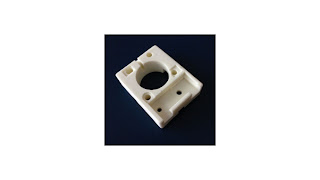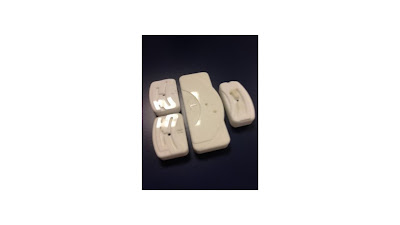The word ceramic refers to the world of ceramics, clay pots, and more which are found in various households. Appreciated by both the user and the creator, these items are made from simply occurring clay and sand. Due to the improvement of technology, ceramic elements are now being produced in a laboratory under the keen eye of experts. Created with a variety of ingredients and many processing methods, ceramics are used in a broad range of industrial commodities. Ceramics obtained through the above-mentioned technique are recognised as advanced ceramics or industrial ceramics. The thermal stability of industrial ceramics, wear protection and resistance to corrosion of ceramic elements make the use of ceramics the perfect choice for several industrial uses. There are several types of ceramics available for industrial application, the following are some of them. Take a look:
Alumina Ceramic: Alumina ceramic offers excellent insulation features for electricity along with high wear and tear protection and high hardness but has relatively lower energy and rupture toughness. It is the most developed form of construction ceramics. Most of the alumina ceramics is usually white. Some of these ceramics might also be dawn-tinted which has nearly 80 per cent of alumina or brown that has about 90 per cent of alumina. The colour of the ceramic comes from the contaminants in the raw elements or the sintering additives. Alumina ceramics have excellent cleanliness and are most suitable for the environment wherein protection from corrosive substances or wear and tear is needed. These ceramics are also employed in fields where the temperatures are very high and stability to it is needed as this ceramic is identified to have elevated thermal resistance. For the alumina wear braces, the alumina ceramic is the most desirable material because of the capacity to maintain heat and wear and tear makes the ceramic ideal for making wear-resistant components.
Steatite Ceramic: Steatite ceramic is an advanced ceramic made from magnesium silicate and is a traditional choice of metal for insulations for electrical elements. Other features of steatite include superior dielectric intensity, low emission factor, and high production intensity. Moreover, due to steatite’s great insulating properties, it is used in thermostats and several other electrical household items.
Zirconium Ceramic: Zirconium dioxide which is also recognised as zirconia is a white crystalline oxide of the element zirconium. Zirconia can be supposed to have the most powerful toughness and durability at any place temperature and this is said in association with most of the superior ceramic elements. Its excellent texture size enables extremely fine edges and even surfaces. It has many uses as it is used in blades, shears, metal forming machines, slitters, pump handles, tweezers, bearing sleeves, cable drawing circles and valves. The main application of zirconia is that it is used in the production and creation of ceramics. There are some other applications such as the protective coating on the particles of titanium dioxide orpiments. It is used as a stiff material, grinders, enamels and surrounding as well. The sustained zirconia is used in the oxygen sensors and the layers of fuel containers because of its unique capability to provide the oxygen ions to flow very smoothly through the construction of the crystal at very high heat.
Silicon Carbide Ceramic: When the fragments of silicon carbide are bonded collectively through a process which is called sintering, they create a very strong ceramic. Because of its hardness, it is used in applications demanding high endurance like car clutches, ceramic plates, car brakes, and bulletproof vests.
Mullite Ceramic: Mullite is a very unique silicate material, produced at high temperatures and in low-pressure situations. Its features include low thermal extension, low thermic conductivity, superior creep stability, suitable high-temperature durability and leading resistance under severe chemical environments.
Besides these ceramics, machinable glass ceramics like Macor is also a type of industrial ceramic.






0 comments:
Post a Comment